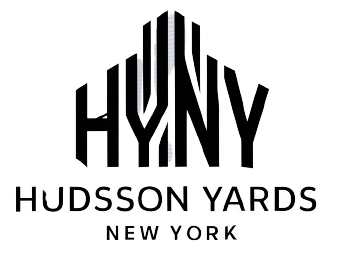Understanding Employer Responsibilities for PPE
Employers have a crucial role in ensuring the safety of their employees by providing the necessary personal protective equipment (PPE). The Occupational Safety and Health Administration (OSHA) mandates that employers pay for and provide PPE to protect workers from potential hazards in the workplace. By understanding their responsibilities and the types of PPE required, employers can create a safer work environment and comply with OSHA regulations.
Failing to provide adequate PPE can lead to serious injuries, illnesses, and even fatalities. Employers must take a proactive approach in assessing workplace hazards and selecting the appropriate PPE for their employees. This not only safeguards workers but also demonstrates the company’s commitment to safety and compliance.
What is Personal Protective Equipment (PPE)?
Personal Protective Equipment (PPE) refers to any equipment or clothing worn by workers to minimize exposure to hazards and prevent injuries or illnesses. PPE acts as a barrier between the worker and the potential hazard, reducing the risk of harm. Examples of PPE include safety glasses, hard hats, respirators, gloves, steel-toe boots, and reflective vests.
The type of PPE required depends on the specific hazards present in the workplace. Employers must conduct a thorough hazard assessment to identify potential risks and determine the appropriate PPE for each job task. PPE should be selected based on its ability to effectively protect against the identified hazards while allowing workers to perform their duties comfortably and efficiently.
OSHA Regulations on PPE
The Occupational Safety and Health Administration (OSHA) sets and enforces standards for workplace safety, including the provision and use of PPE. OSHA’s PPE standards, found in 29 CFR 1910 Subpart I, outline the requirements for employers to provide PPE and ensure its proper use by employees.
According to OSHA regulations, employers must:
- Assess the workplace to identify and control hazards
- Provide appropriate PPE to employees at no cost
- Train employees on the proper use, care, and limitations of PPE
- Maintain PPE in a sanitary and reliable condition
- Replace damaged or worn-out PPE
Employers who fail to comply with OSHA’s PPE standards may face citations, fines, and legal liabilities. By adhering to these regulations, employers demonstrate their commitment to worker safety and create a culture of compliance within their organization.
Types of PPE Employers Must Pay For
Employers are responsible for providing a wide range of PPE to protect workers from various hazards. The specific types of PPE required depend on the nature of the work and the potential risks involved. Here are some common types of PPE that employers must pay for:
Safety Glasses and Goggles
Eye protection, such as safety glasses and goggles, is essential in workplaces where there is a risk of flying debris, dust, or chemical splashes. Employers must provide appropriate eye protection that meets ANSI Z87.1 standards and ensures a secure and comfortable fit for each worker.
Hard Hats and Helmets
In environments where there is a potential for falling objects or overhead hazards, employers must provide workers with hard hats or helmets. These head protection devices should comply with ANSI Z89.1 standards and be appropriate for the specific hazards present in the workplace.
Respirators and Masks
Respiratory protection is crucial in workplaces with airborne hazards such as dust, fumes, vapors, or gases. Employers must provide NIOSH-approved respirators or masks that are suitable for the specific contaminants and ensure proper fit testing and training for employees.
Steel-Toe Boots and Footwear
In industries where there is a risk of foot injuries from falling objects, punctures, or chemical exposure, employers must provide workers with appropriate safety footwear. Steel-toe boots or shoes that meet ASTM F2413 standards are commonly required in construction, manufacturing, and other hazardous environments.
Chemical Resistant Gloves
When working with hazardous chemicals, employers must provide workers with chemical-resistant gloves that offer protection against the specific substances handled. Glove materials may include nitrile, neoprene, or butyl rubber, depending on the chemical properties and the duration of exposure.
Reflective Work Vests
In low-light conditions or when working near moving vehicles or equipment, reflective work vests are essential for enhancing worker visibility and preventing accidents. Employers must provide high-visibility vests that meet ANSI/ISEA 107 standards and ensure their proper use.
Firefighting Gear
For workers engaged in firefighting activities, employers must provide specialized PPE such as fire-resistant clothing, helmets, gloves, and boots. This gear must meet NFPA standards and be regularly inspected and maintained to ensure its effectiveness in protecting firefighters from heat, flames, and other hazards.
Exceptions and Special Cases
While employers are generally required to pay for PPE, there are some exceptions and special cases where the responsibility may vary. Understanding these exceptions can help employers navigate their obligations and ensure compliance with OSHA regulations.
Non-Specialty Safety Toe Footwear
According to OSHA’s interpretation, employers are not required to pay for non-specialty safety toe footwear, such as steel-toe boots or shoes, if they allow the employee to wear the footwear off the job site. However, if the employer requires specific footwear that cannot be worn outside of work, they must cover the cost.
Non-Specialty Prescription Eyewear
Employers are not obligated to pay for non-specialty prescription safety eyewear, such as glasses or contacts, as long as they allow the employee to use them outside of work. If the employer requires specific prescription eyewear that is not suitable for everyday use, they must bear the cost.
Everyday Clothing and Work Boots
OSHA does not require employers to pay for everyday clothing items such as long-sleeve shirts, pants, or regular work boots that are not considered PPE. However, if the employer requires specific clothing or footwear for protection against workplace hazards, they must provide it at no cost to the employee.
Sunscreen and Other Non-PPE Items
Sunscreen and other items that are not directly classified as PPE may not be covered under OSHA’s regulations. The provision of these items typically depends on company policies and local regulations. Employers should assess the specific needs of their workplace and consult with legal experts to determine their obligations.
Employer Strategies for Providing PPE
Employers have several options for providing PPE to their employees. The chosen method may depend on factors such as the size of the workforce, the frequency of PPE replacement, and the company’s financial resources. Here are some common strategies employers can consider:
Stocking PPE
Employers can maintain an inventory of PPE on-site, allowing employees to easily access the necessary equipment when needed. This approach ensures that PPE is readily available and can be quickly replaced if damaged or worn out. However, it requires proper storage facilities and inventory management to avoid shortages or expired equipment.
PPE Allowances
Some employers provide their workers with a PPE allowance, a set amount of money allocated for purchasing the required safety equipment. Employees can then use this allowance to buy PPE from approved vendors or through company-sponsored programs. This method gives workers some flexibility in selecting PPE that fits their individual needs and preferences.
Reimbursement Systems
Another option is to implement a reimbursement system where employees purchase their own PPE and submit receipts for reimbursement. This approach can be convenient for workers who prefer to buy PPE from specific brands or retailers. However, it requires clear guidelines on eligible expenses and timely processing of reimbursement requests to ensure employees are not burdened with out-of-pocket costs.
Ensuring Compliance and Safety
Providing PPE is just one aspect of creating a safe work environment. Employers must also take proactive steps to ensure compliance with OSHA regulations and promote a culture of safety within their organization. Here are some key strategies for maintaining a safe workplace:
Conducting Hazard Assessments
Regular hazard assessments are crucial for identifying potential risks and determining the appropriate PPE for each job task. Employers should conduct thorough assessments of their workplace, considering factors such as equipment, chemicals, noise levels, and ergonomic hazards. Based on the findings, employers can select suitable PPE and implement other safety measures to mitigate risks.
Training Employees on PPE Use
Providing PPE is not enough; employers must also train their workers on the proper use, care, and maintenance of the equipment. Training should cover topics such as how to wear PPE correctly, how to inspect it for damage or wear, and how to store it properly. Employers should provide hands-on training and ensure that workers demonstrate proficiency in using PPE before starting their job tasks.
Monitoring and Replacing PPE
PPE is subject to wear and tear over time, and its effectiveness may diminish with prolonged use. Employers must regularly inspect PPE for signs of damage, expiration, or reduced functionality. Damaged or worn-out PPE should be promptly replaced to maintain its protective qualities. Employers should also establish a schedule for PPE replacement based on manufacturer recommendations and the specific hazards present in the workplace.
See also:
- The Strategic Advantage of Aircraft Engine Stands Rent in Modern Aviation
- How Much Does McDonald’s Pay 16 Year Olds? Find Out Here!
- What Jobs Pay Weekly? Discover Top Opportunities for Weekly Pay
- What Is Semi Monthly Pay? Understanding the Basics and Benefits
- What is Back Pay? Understanding Its Definition and Importance






